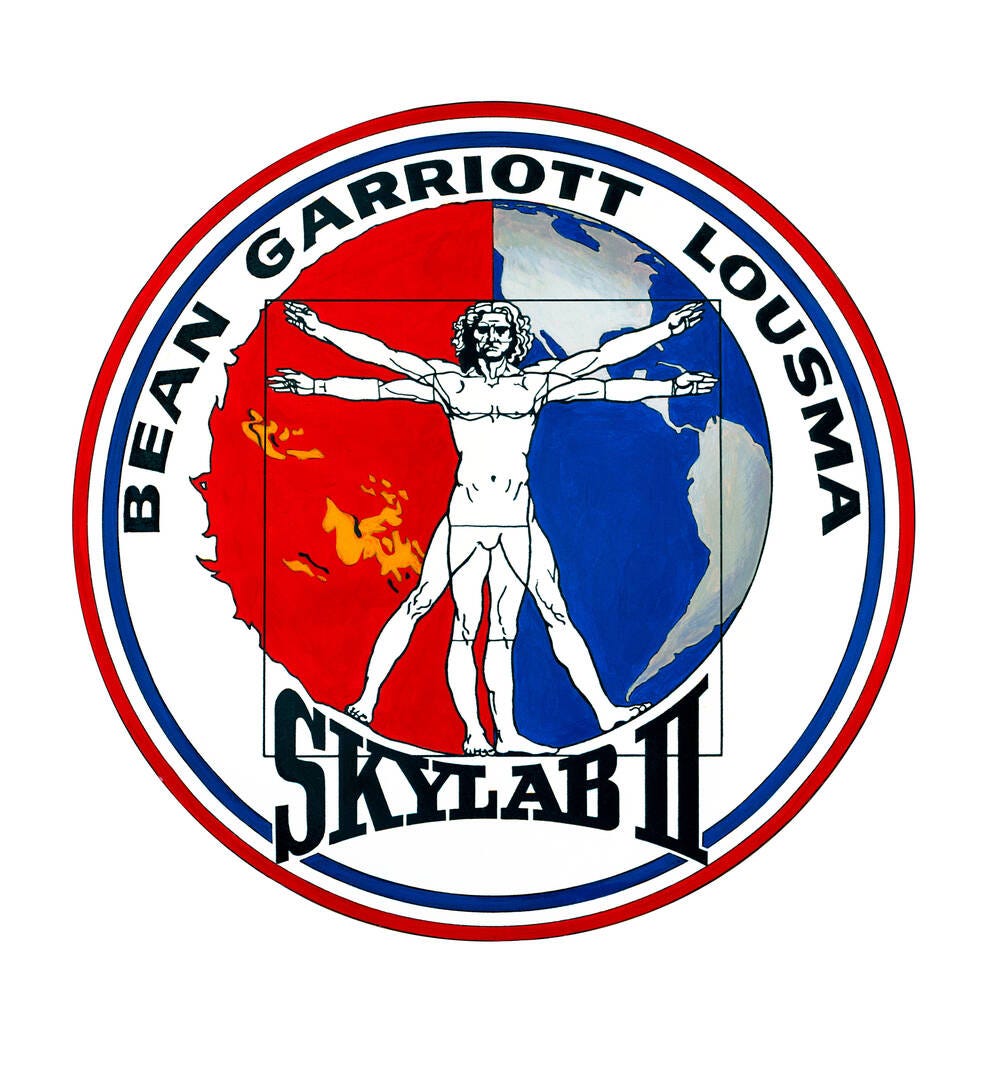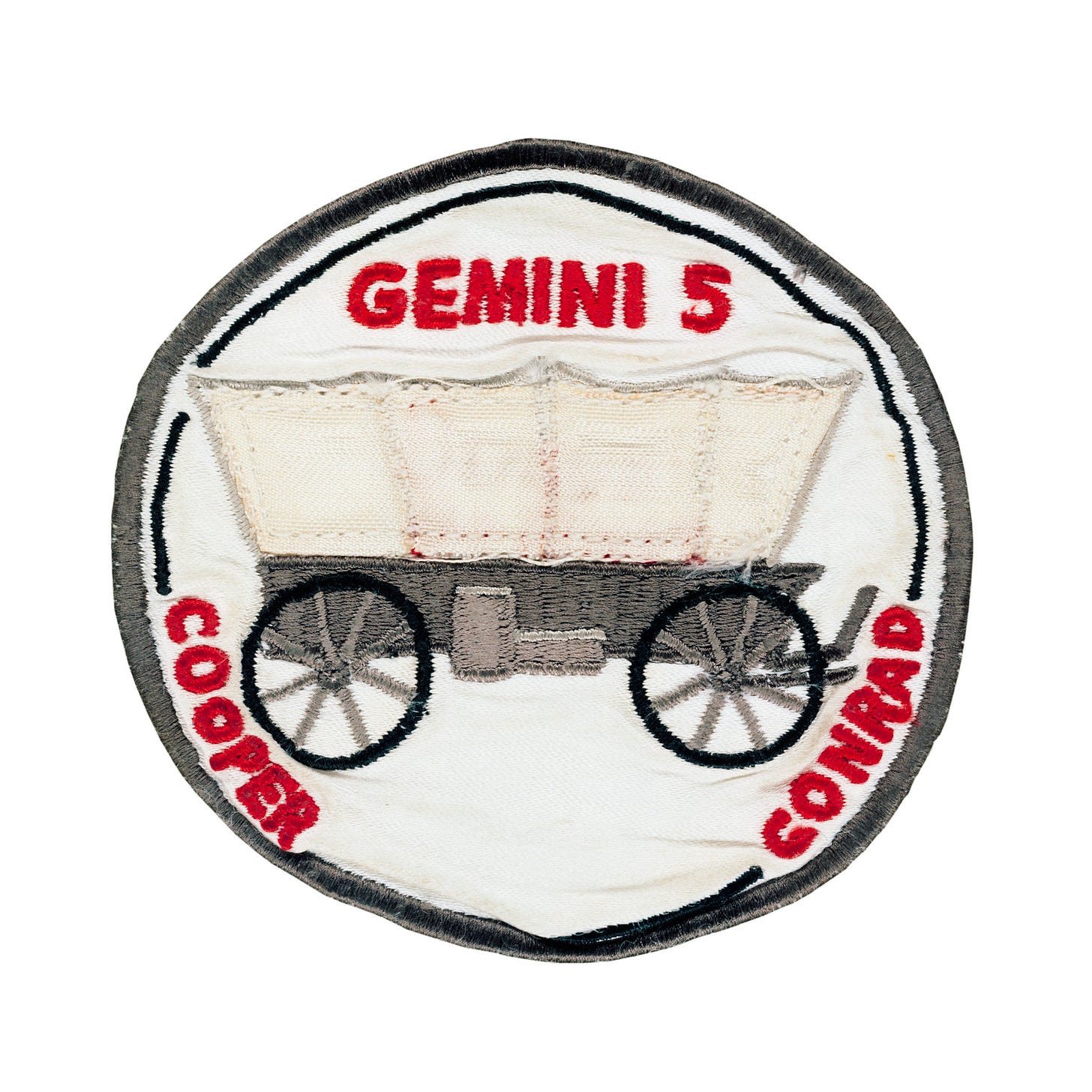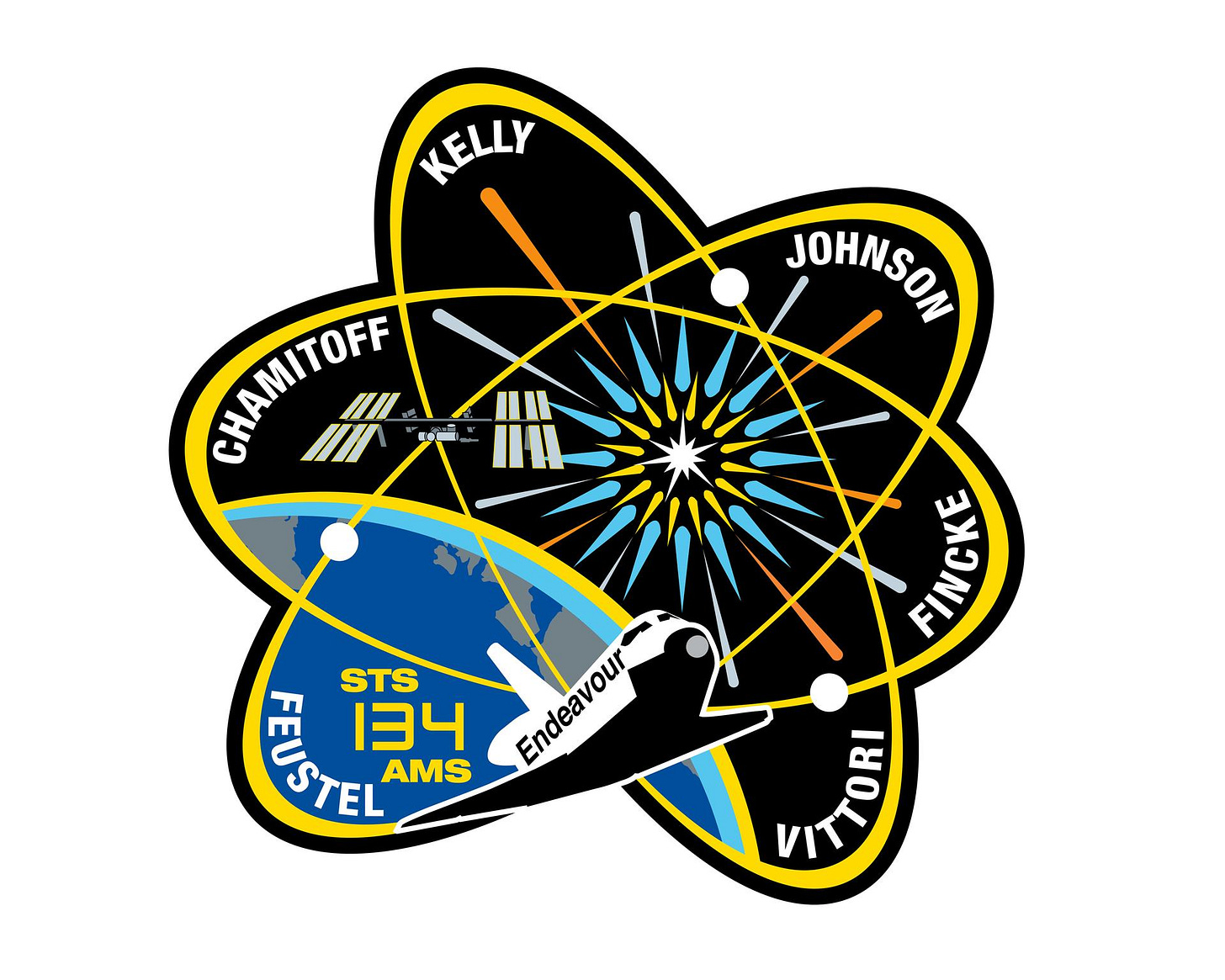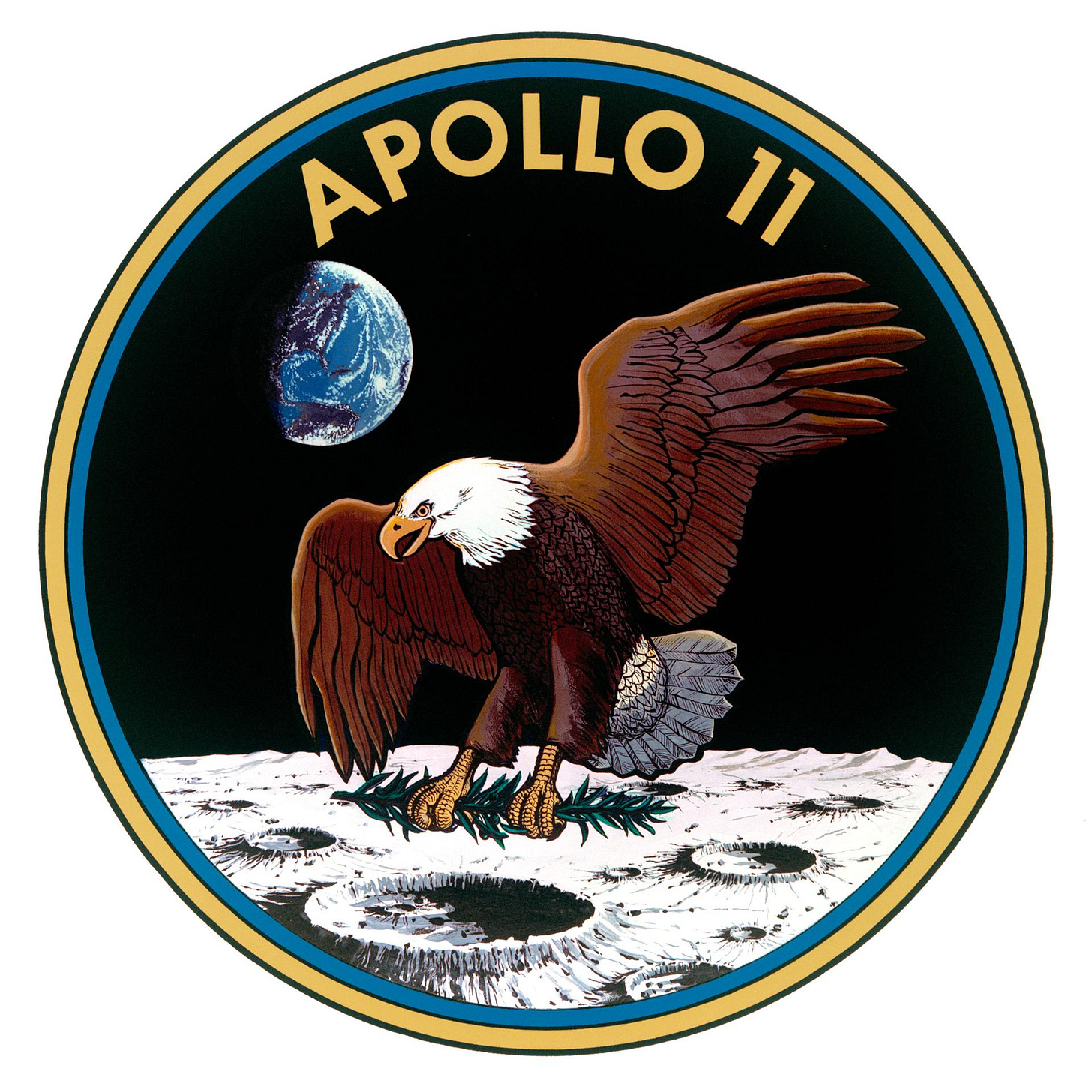A work of art doesn’t have to be big to make an impact. Take, for example, the mission patches that have for decades been a part of the U.S. space program.
Small enough to wear on a space suit, the patch of each mission tells its story in a symbolic, graphic way. Each patch is a small work of art – and a collectible item as well.
NASA’s Apollo 11 mission patch features a flying bald eagle, symbol of the United States, clutching an olive branch in its talons above the cratered surface of the Moon with a sunlit hemisphere of Earth in the background amid the black void of space. Apollo 11 is world famous for the first landing of humans on our moon.
But Neil Armstrong, Buzz Aldrin and Michael Collins did not have their names on the patch. Collins said that was so the patch could better represent the thousands of people who made the mission a reality.
Each mission patch is distinctive in design, which makes sense since no two missions are alike. Apollo 11 after all was quite different than say Skylab II in 1973, the first crewed mission to the United States’ first orbital space station, Skylab.
That patch has the image of Leonardo da Vinci’s Vitruvian Man superimposed on a globe that is half Earth and half Sun with the names of the astronauts (Alan Bean, Owen Garriott and Jack Lousma) arcing at the top.

Vitruvian Man (aka “Le proporzioni del corpo umano secondo Vitruvio, lit”) was an inspired choice for the patch design since Skylab II’s mission was to “study human adaptation to space flight and to study the Earth and Sun from space.”
And mission patches usually include the names of the crew. That seems more than fair for the risks they are taking. You can see the history of NASA’s space mission patches at Human Spaceflight Mission Patches - NASA.
NASA’s history of mission patches doesn’t quite reach back to its origins, though. The Mercury missions did not have any patches. It wasn’t until Gemini 5 that patches became a way to commemorate the mission.
That patch features a covered wagon, the name Gemini 5 at top and the last names of the crew: Gordon Cooper and Pete Conrad. They had a big hand in designing their patch, and it’s been that way for missions ever since.

But the first space mission patch wasn’t one of NASA’s making. In 1963, Soviet cosmonaut Valentina Tereshkova wore the first patch during the Vostok 6 mission.
That patch features a white dove holding an olive branch as it flies against a backdrop of gold sunrays. At the bottom are the initials CCCP, a Russian abbreviation for the Soviet Union.
Nice to think they might have had peace in mind back then.
An eagle, a dove, a covered wagon, Vitruvian Man – these are only a sampling of the diverse symbolic images incorporated into space mission patches. During the Space Shuttle era, the shuttle was usually (but not always) a central image on the patch.
STS-134, the final flight of Endeavour, not only included that shuttle but an atom with electrons orbiting the nucleus at the patch’s center.
During that mission, Endeavour’s crew delivered a revolutionary particle-physics detector to the International Space Station, one which was designed to study cosmic rays and search for evidence of antimatter, dark matter and dark energy.

STS-107’s mission was to do Earth science research, especially studying microgravity. The overall patch is shuttle shaped, and the dominant image is the symbol for microgravity.
The first Microgravity Sciences Laboratory 1 mission is the focus of STS-83 in 1997, conducting the experiments in the cargo bay of the Columbia shuttle.
Space mission patches are still a thing with NASA’s Artemis program, which plans to return humans to the Moon.
According to NASA, the artwork for the Artemis I patch “showcases the Space Launch System (SLS) rocket carrying the Orion spacecraft and lifting off from Launch Pad 39B at NASA’s Kennedy Space Center in Cape Canaveral, Florida.
The triangular shape represents the three main programs that comprise NASA’s Deep Space Exploration Systems: Orion, SLS, and Exploration Ground Systems, and is a classic shape for NASA mission emblems dating back to the shuttle era.”
SpaceX, the private spaceflight company, also has its space mission patches. The patch for the SpaceX Crew-4 mission to the ISS in 2021, for instance, features an image of a dragonfly, which represents transformation and good fortune.
A dragon is the central image of the SpaceX Crew-2 mission patch. At least so far SpaceX hasn’t used Elon Musk’s mug on a patch.
The Republic of China’s Shenzhou manned space program has its patches as does the European Space Agency. The space mission patch obviously has international appeal.
Someday, hopefully, there will be a patch to commemorate the first human mission to Mars.
Then on from there!



